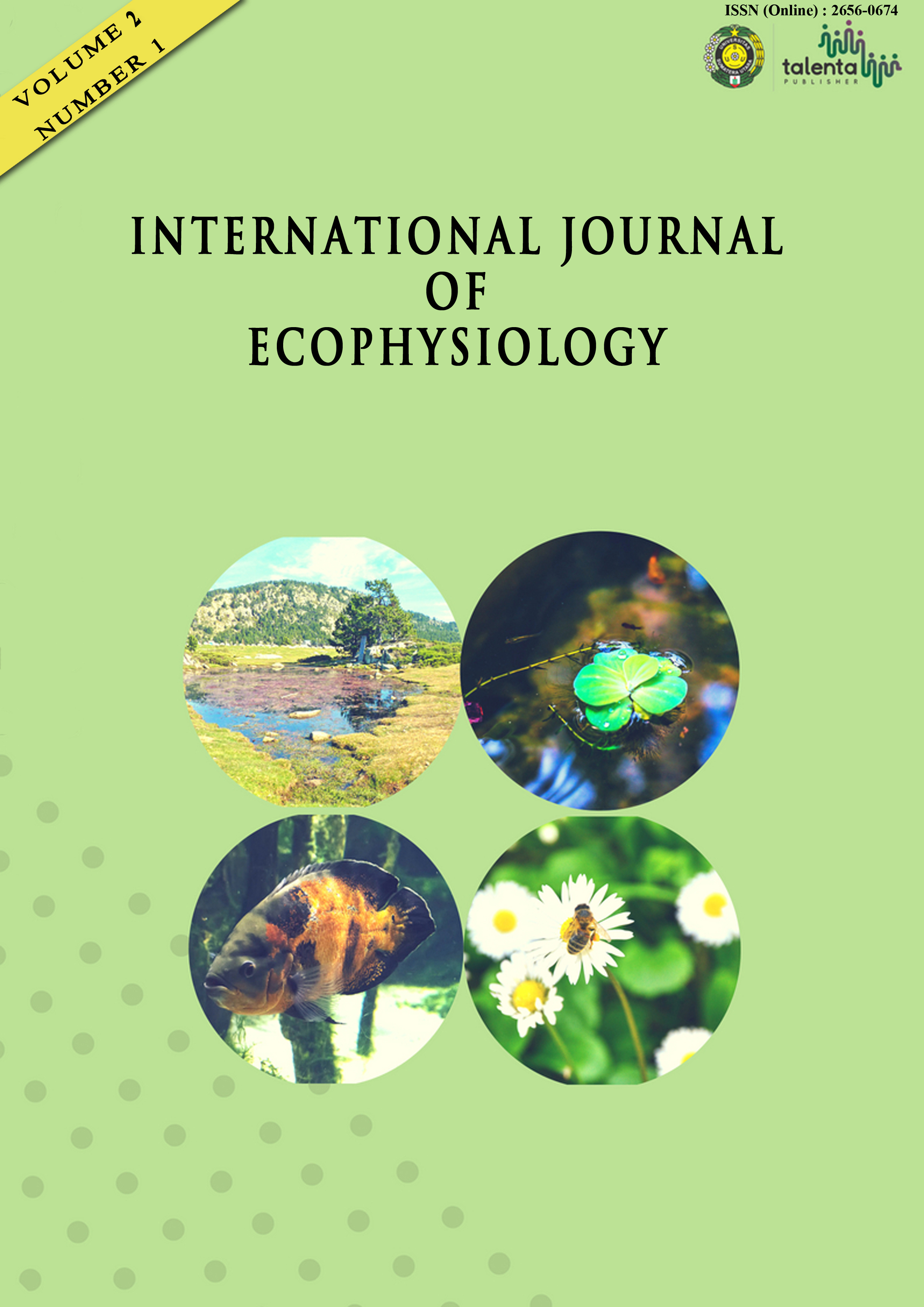Monitoring of The Palm Oil Plantation Ecosystem Based on Land Macrofauna Diversity
DOI:
https://doi.org/10.32734/ijoep.v2i1.3982Keywords:
Soil Macrofauna, Density, Diversity, Uniformity, Soil ApplicationAbstract
Oil palm plantations of PT. Supra Matra Abadi has used palm oil mill effluent to the plantation area as fertilizer (Land Application) to part of its plantation area. The difference in land use and management in the plantation area also determines the presence, both species, density, diversity index value, and soil macrofauna uniformity index. Soil macrofauna plays a role in maintaining the balance of the soil ecosystem. This research has been conducted at PT. Supra Matra Abadi, located in Kebun Panji Bay, Kampung Rakyat District, Labuhanbatu Selatan Regency, North Sumatra Province in May-July 2018. This research was conducted to determine the presence of species, population density, diversity index values, and uniformity of soil macrofauna on oil palm plantations. Determination of the sampling point is done by the Purposive Random Sampling method, soil macrofauna sampling using the Quadratic and Hand Sorting methods. There are 15 species of soil macrofauna which are grouped into 2 phyla, 5 classes, 9 orders, 12 families, and 15 genera. The highest density value was found in the area of plantations that were not given liquid palm oil mill effluent as fertilizer (Non Land Application) of 282.15 ind / m2 and the highest diversity index value was found in the area of oil palm plantations which were fertilized with palm oil mill liquid waste to land area (Land Application) which shows that the condition of the oil palm plantation ecosystem which is fertilized with palm oil mill effluent (Land Application) can support the life, diversity, and uniformity of soil macrofauna.














